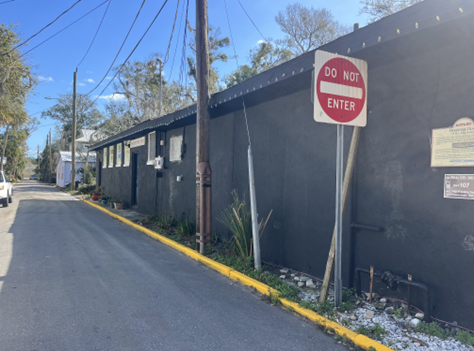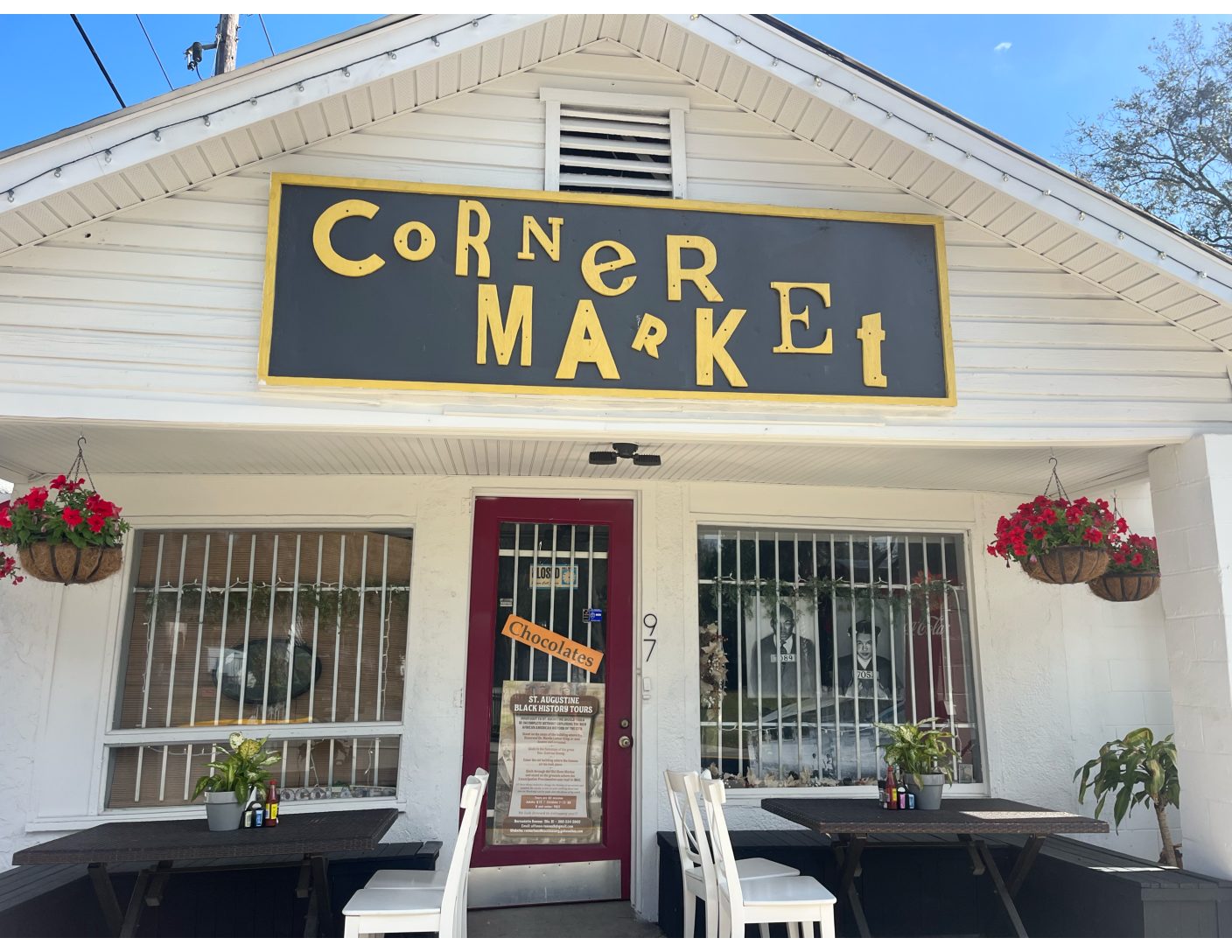By Chloe Smith
The loss of history, heritage and culture for St. Augustine’s Lincolnville – the city’s most prominent historically black neighborhood – has become a concern over recent decades. But long-time resident Nykol Smith is working to revive it by adding a splash of color.
Smith, owner of the Corner Market and valuable member of the Lincolnville community, designed a mural illustrating monumental African American history that will be painted on the north exterior wall of her store, located at 97 MLK Avenue.
She intends to finish the mural in June, ideally around Juneteenth. While the details of what the mural will depict are still undecided, Smith aims for “art with a statement” that captures the history and strength of the community she’s known her entire life.
“As the neighborhood is changing, this is something that you can see every day and walk by and hopefully feel encouraged or inspired,” said Smith, who’s lived through and experienced the city’s many historic events and demographic changes over the years.
Only about 25 years ago, Lincolnville was primarily African-American. An area that was originally founded by newly freed slaves in 1866, it was once full of lively churches, schools and a business center surrounded by residences.
According to the U.S. Census, the racial makeup of Saint Augustine currently consists of 85.5% white, 7.5% Hispanic, and 6.4% black. As the population continues to become less racially diverse, the rich African American culture and heritage get buried further. The Lincolnville community and other groups have been pushing for the addition of more local murals as a way to illustrate the significant racial historical events that occurred in the area.
It only takes stepping inside the Corner Market to understand Smith’s passion for art, as her store has several incredible pieces. But she decided she wanted art outside the building for those who may just be walking or driving by.
Growing up in Lincolnville and running the local family business for almost eight years, Smith has always connected deeply to her community, which is the inspiration for the mural.
“A lot of people in the community were unsung heroes,” she said, referring to the many influential members of Lincolnville whose actions shaped the community into what it is today.

The Lincolnville community has been of great support to Smith throughout the project, with almost thirty people attending the first and second meetings to help bring the vision to life.
The mural is also expected to recognize African American history, focusing on the Civil Rights Movement. Smith said she wants to “draw out what was great about that era” while acknowledging the hardships and struggles that defined it.
A series of civil rights protests, known as the St. Augustine Movement, occurred in Lincolnville between 1963 and 1964. This movement, where Civil Rights leader Martin Luther King Jr. was arrested, played a role in the passage of the Civil Rights Act of 1964 and was a focal point for the Civil Rights Movement.
Helping turn Smith’s dream into a reality is Compassionate St. Augustine, a non-profit of residents who encourage a culture of compassion through such actions. When asked about the mural, Executive Director Arthur Culbert highlighted the importance of “expressing compassion through the arts” and stated how “this city has a really raw racial history,” but considerably lacks in public art. Culbert hopes to work toward incorporating more murals and other forms of art into the St. Augustine.
One of the main objectives of Compassionate St. Augustine is to bring attention to and preserve the city’s racial history. St. Augustine is filled to the brim with trolleys, shuttles and other attractions that allow tourists to learn about the rich history. Multiple members of Compassionate St. Augustine pointed out the common denominator between these downtown attractions: the failure to mention African American history.
“Leaving out the black history is leaving out crucial American history,” said Trey Asner, historic preservationist and member of Compassionate St. Augustine.
Although the Corner Market mural is the first for the community, Smith hopes to see more throughout the historically significant locations of Lincolnville.
She even mentioned possibly designing the Corner Market mural to change every year, which would “give us the opportunity to get the community involved,” Smith said. However, she is still working to find funding to make it happen.
“The great thing is if we do it every year, then we can have the art, and it can go with us every year,” she said.
With the addition of the Corner Market mural, the Lincolnville neighborhood, and various St. Augustine groups hope to see a positive change within the community, with more people acknowledging the wealth of African American history that they don’t ever want forgotten.



Be the first to comment on "Corner Market mural to bring African American history back to life in St. Augustine"